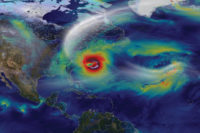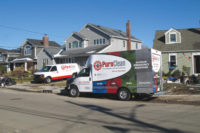Helping Property Owners Recover from a Fire-Damage Emergency

Dealing with a fire-damage emergency and the claims process is an emotionally trying time for a policyholder. A restoration professional must be sensitive to the personal and emotional aspects of a fire-damage situation. It’s imperative to recognize that a homeowner goes through five stages of grief: denial, anger, bargaining, depression and acceptance.
The professional must be prepared to respond appropriately to each situation. Insurance professionals need to prepare the homeowner for the restoration process, work closely with the restoration professional to ensure quality and timely work, and maintain a constant flow of communication throughout the process. A restoration professional must recognize that every loss is significant to the people impacted by it, and take the proper steps to restore the home to pre-loss condition.
Dealing With a Fire-Damage Emergency
A fire loss is often more severe than a water loss, and special attention to safety is imperative. The restoration professional needs to ask the property owner some simple questions to quickly evaluate the level of damage: “Is there any structural damage? Is there a lot of smoke?”Air quality is the most important factor to evaluate. With any fire, carcinogens enter the air, and safeguards will need to be put in place to help ensure the safety of the air that the residents and workers breathe. All necessary PPE should be available for technicians, as well as the proper equipment to replace the bad air with fresh air as soon as possible.
If not already aware, the service professional should consider the ages and health of everyone in the home. Young children, the elderly and pregnant women might need to leave the property immediately, as they are often more susceptible to air-quality related health issues. If the client is not comfortable living in the home, the agent needs to assist in finding alternative accommodations for the residents.

Specifics to Consider When Scoping a Smoke and Soot Loss
There are several important steps to take when analyzing a fire-damage emergency:- Evaluate how much heat was involved that resulted in damage to the structure, fixtures and contents. Look for a “heat line” on the wall, which often indicates possible damage to the structural integrity of the drywall materials.
- Where did the smoke/soot travel to? Did the smoke get into the HVAC system? Did the smoke travel into the attic areas, or force its way into the crawl space or basement?
- Consider pre-cleaning as an alternative process to save the metal and glass items in a home.
- Is there excessive smoke inside of the walls? This often requires removal of the drywall to get rid of the smoke/soot and accompanying odors.
- Determine which systems are available that will best deodorize the property and contents. These include professional cleaning and sanitizing; organic deodorizing systems; hydroxyls; and/or ozone.
- Determine the extent of the damage and the processes/procedures that will return the property, and the lives of those people involved, back to a “pre-loss” condition as quickly as possible.
- Respond as rapidly as possible to minimize the long-term effects of smoke and soot damage, and the many acids those materials contain.
Wildfires often destroy thousands of acres of property and hundreds of homes. There is not much a mitigation company can do in those situations. However, there are often thousands of homes that are downwind from the fire that suffer smoke and soot damage, both on the exterior and the interior of homes. Smoke enters around doors and windows, through the ventilation system and even through the soffit vents into the attic areas.
Knowing how to deal with these materials quickly and professionally to neutralize and remove the compounds from the home, and to control and manage the odor damage are key aspects of a professional restoration/mitigation company.
Overall, the most important thing to understand about a fire damage emergency is that helping a client cope with the property loss is first priority. Communication along the way and hand-holding through the process is just as important, if not more, than the property owner receiving a check for the loss.
The restoration professional should be empathetic and emphasize that the damage will be taken care of, but never pass off the restoration process as a casual routine. The level of damage should be evaluated quickly and efficiently. It is critical to work with the insurance agent to educate the policyholder, ease their concerns, and manage their expectations.
Understand that each client will go through five steps of grief, and anticipate that anger will turn up one way or another. If the restoration professional expects this emotion to surface, they will be prepared to help the client cope and restore their sense of calm.
Looking for a reprint of this article?
From high-res PDFs to custom plaques, order your copy today!




